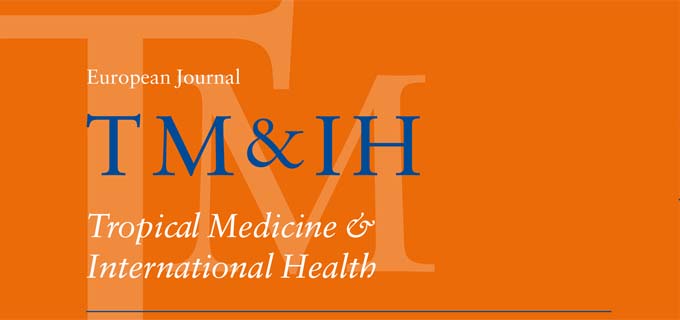Tuberculosis disease and infection among household contacts of bacteriologically confirmed and non-confirmed tuberculosis patients

Citation: Warria, K., Nyamthimba, P., Chweya, A., Agaya, J., Achola, M., Reichler, M., Cowden, J., Heilig, C.M., Borgdorff, M.W., Cain, K.P. and Yuen, C.M. (2020), Tuberculosis disease and infection among household contacts of bacteriologically confirmed and non‐confirmed tuberculosis patients. Trop Med Int Health, 25: 695-701. doi:10.1111/tmi.13392
Abstract: Objective: To compare the prevalence of tuberculosis infection and disease in household contacts of patients with bacteriologically confirmed tuberculosis disease and contacts of non‐bacteriologically confirmed disease in western Kenya.
Methods: We enrolled newly diagnosed index patients and their household contacts from March 2014 to June 2016. All contacts were evaluated with a symptom questionnaire, tuberculin skin test (TST) and HIV test. Clinical evaluation and sputum testing were performed for those with symptoms, positive TST result or HIV infection.
Results: We enrolled 1155 contacts of 330 index patients with bacteriologically confirmed tuberculosis and 192 contacts of 55 index patients with non‐bacteriologically confirmed tuberculosis. 3.5% of contacts of patients with bacteriologically confirmed tuberculosis were diagnosed with tuberculosis, whereas no contacts of index patients with non‐bacteriologically confirmed tuberculosis were. Of those diagnosed with tuberculosis disease, 58.5% reported symptoms, 34.1% reported no symptoms but had positive TST results, and 7.3% had neither symptoms nor positive TST but were HIV‐positive. Among 872 contacts with a TST result, 50.9% of contacts of index patients with bacteriologically confirmed tuberculosis and 41.0% of contacts of index patients with non‐bacteriologically confirmed tuberculosis had a positive result (prevalence ratio = 1.16, 95% confidence interval 0.92–1.48).
Conclusion: In a high‐burden setting, tuberculosis disease was more prevalent among contacts of patients with bacteriologically confirmed tuberculosis than contacts of patients with non‐bacteriologically confirmed disease. TST was feasible to perform and helped to detect cases that would have been missed had only symptomatic contacts been evaluated.
Methods: We enrolled newly diagnosed index patients and their household contacts from March 2014 to June 2016. All contacts were evaluated with a symptom questionnaire, tuberculin skin test (TST) and HIV test. Clinical evaluation and sputum testing were performed for those with symptoms, positive TST result or HIV infection.
Results: We enrolled 1155 contacts of 330 index patients with bacteriologically confirmed tuberculosis and 192 contacts of 55 index patients with non‐bacteriologically confirmed tuberculosis. 3.5% of contacts of patients with bacteriologically confirmed tuberculosis were diagnosed with tuberculosis, whereas no contacts of index patients with non‐bacteriologically confirmed tuberculosis were. Of those diagnosed with tuberculosis disease, 58.5% reported symptoms, 34.1% reported no symptoms but had positive TST results, and 7.3% had neither symptoms nor positive TST but were HIV‐positive. Among 872 contacts with a TST result, 50.9% of contacts of index patients with bacteriologically confirmed tuberculosis and 41.0% of contacts of index patients with non‐bacteriologically confirmed tuberculosis had a positive result (prevalence ratio = 1.16, 95% confidence interval 0.92–1.48).
Conclusion: In a high‐burden setting, tuberculosis disease was more prevalent among contacts of patients with bacteriologically confirmed tuberculosis than contacts of patients with non‐bacteriologically confirmed disease. TST was feasible to perform and helped to detect cases that would have been missed had only symptomatic contacts been evaluated.
Author(s): Tropical Medicine & International Health
Year: 2020
Language: English
Region(s): KENYA
Resource Type: Journal Articles
Source: Other
Filed under: Case detection, Contact investigation, HIV, Household contact, Journal Article, Kenya, Research, TB patients
